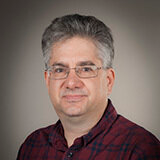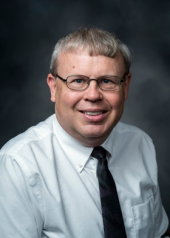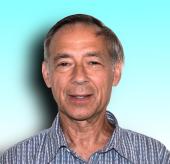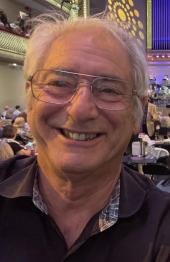Elections for AAVSO Board members are held annually prior to the Annual Meeting. Voting in this election is open only to AAVSO members in good standing.
*** Meet the Candidates webinar: To give you the opportunity to meet the candidates online (via Zoom), we held a webinar on Saturday, September 23, 2023, at 18:00 UT (2 p.m. ET). Watch the video of the webinar
Voting procedure:
All AAVSO members in good standing as of September 1, 2023, who have an email address in their AAVSO profile will be emailed an invitation on September 1 with a link to vote for new board members to fill the three vacancies. These secure online votes must be received by November 5 at 09:00 A.M. EST (14:00 UT). (Please note that in the USA, Standard Time begins on the morning of November 5.)
All AAVSO members in good standing who do not have an email address in their AAVSO profile will receive a paper ballot and pre-addressed and stamped envelope to mail in their votes. Mailed-in ballots must be received at AAVSO HQ by October 27 at 09:00 A.M. EDT (13:00 UT).
Questions? Please email aavso@aavso.org
Thank you for voting!
Slate of candidates for the 2023 AAVSO Board election:
Walt Cooney, Texas, USA
Matt Craig, Minnesota, USA
Eric Hintz, Utah, USA
Mark Munkacsy, Rhode Island, USA
Diogo Teixeira, Massachusetts, USA
Candidate statements
Walt Cooney
 |
I am a retired chemical engineer and an amateur astronomer with a life-long passion for the hobby and for contribution to the science of astronomy. Alongside years of visual observing, I have served as President of the Baton Rouge Astronomical Society, currently serve on the Board of Directors of the Houston Astronomical Society, am coordinator of the CAMS-Texas meteor camera network, have discovered 60 asteroids, 50 variable stars, and authored or coauthored about 50 papers. I’m a founding member and part owner of the Sonoita Research Observatory that became the first AAVSOnet telescope in 2005 and worked with other amateurs to bring Madrona Peak Observatory into the AAVSOnet. I also serve as co-lead of the AAVSO Cataclysmic Variables Section. |
|
For most of my career I led global teams of engineers working to design new chemical plants and expand existing plants. Later in my career I took on the role of Department Leader for my company’s Central Process Engineering and Process Automation Department. I would like to bring those teamwork and leadership skills to the AAVSO to help us build further the tremendous work the AAVSO has been doing for many years. My priorities are to continue to strengthen communication across the organization, membership growth, financial resources, pro-am collaboration, and support of our visual astronomers. CCD/CMOS photometry and spectroscopy are fantastic tools that have opened up terrific new opportunities for AAVSO members to contribute to astronomy. CCD/CMOS photometry is how I primarily contribute data, but I think the long history of the AAVSO visual work is a treasure trove that we must keep supporting and growing. Visual and CCD work complement each other beautifully. |
Matt Craig
 |
I am running for a position on the AAVSO Board for two reasons. The first is a desire to serve and give back to an organization whose guidance and learning materials have been tremendously helpful as I started an observational astronomy research program at my university. The second is that I believe my experience developing software as part of the core Astropy team, familiarity with the broader Python data science ecosystem, and 20 years of teaching experience will be useful to the organization as it seeks to update the range of important software that it maintains. The AAVSO is fortunate to have a number of experienced software developers willing to donate time to the organization; a more collaborative model like that used in the open source community might help support more effective use of this resource. |
|
I have been involved in the AAVSO since attending a meeting remotely in 2016. Recently, I served as chair of the Data Quality Task Force, whose task was to broadly evaluate the quality of AAVSO data and recommend ways to make future data even more useful to researchers. In addition, I rewrote the Variable Star Plotter in Python over the last couple of years. I would be honored to have the opportunity to serve on the AAVSO Board. Though this statement focuses narrowly on software, I also have leadership experience at my university, including serving as president of the faculty during COVID at a time when the university was also laying off faculty. I am confident that I can play a productive role in the business that the Board needs to carry out, which extends to many areas beyond software. |
Dr. Eric Hintz
 |
As I've considered the question of why I'm running for the AAVSO Board, I realized I've been studying variable stars since I was an undergraduate 35 years ago. Since Dr. Luck gave me a project on SX Phoenicis I've had a passion for variable stars. I want to share those types of experiences with the diverse worldwide community that is the AAVSO. I believe that the overall membership of the AAVSO shows that science is open to everyone. As a member of the board I would like to develop programs to grow the membership of the AAVSO by promoting the diverse backgrounds of the current members. View Eric's nominee questionnaire responses
|
Mark Munkacsy
 |
I've been an AAVSO observer for 27+ years, evolving from visual estimates using a little 6" dob with homemade optics to my current BVRI CCD/CMOS work. I've been a member of the recent AAVSO Data Quality Task Force, the old AAVSO Comparison Star Database Team (during the transition from hand-drawn paper charts to today's database of sequence stars), and led the recent rewrite team that revised the AAVSO Guide to CCD/CMOS Photometry. One of the AAVSO's challenges is keeping pace with technology changes that affect our observing equipment, our analysis software, and the expectations of the researchers that use our data. |
|
Modernization and innovation are essential; today's researchers have alternatives to the AAVSO for variable star observations. We will remain a preeminent source of data only by relentless improvement and adaptation. But, it's important that changes are introduced to our databases and processes in a way that respects the AAVSO community as a diverse collection of variable star observers and researchers; our Board needs to play a role in nurturing our members, addressing their needs, questions, and education – from newcomers trying to figure out if they're doing it right to more experienced observers who can educate the rest of us. As a Board member, I'll bring my career experience with the management of new technology research and development to help us collectively maintain a balance between our efforts to embrace and encourage new observers, expand training and education opportunities for everyone, and take advantage of the awesome ongoing advancements in software and sensor technology. |
Diogo Teixeira
 |
I am running for the Board to help the AAVSO in fundraising. By assuring financial stability the organization will continue its historic mission. Reaching out to new sources of funds is critical and can be done with new outreach efforts that go beyond traditional sources. The Board needs to get involved in this effort, since that is a major function of high performing Boards. View Diogo's nominee questionnaire responses
|
|
|
|
_____________________________________________________

